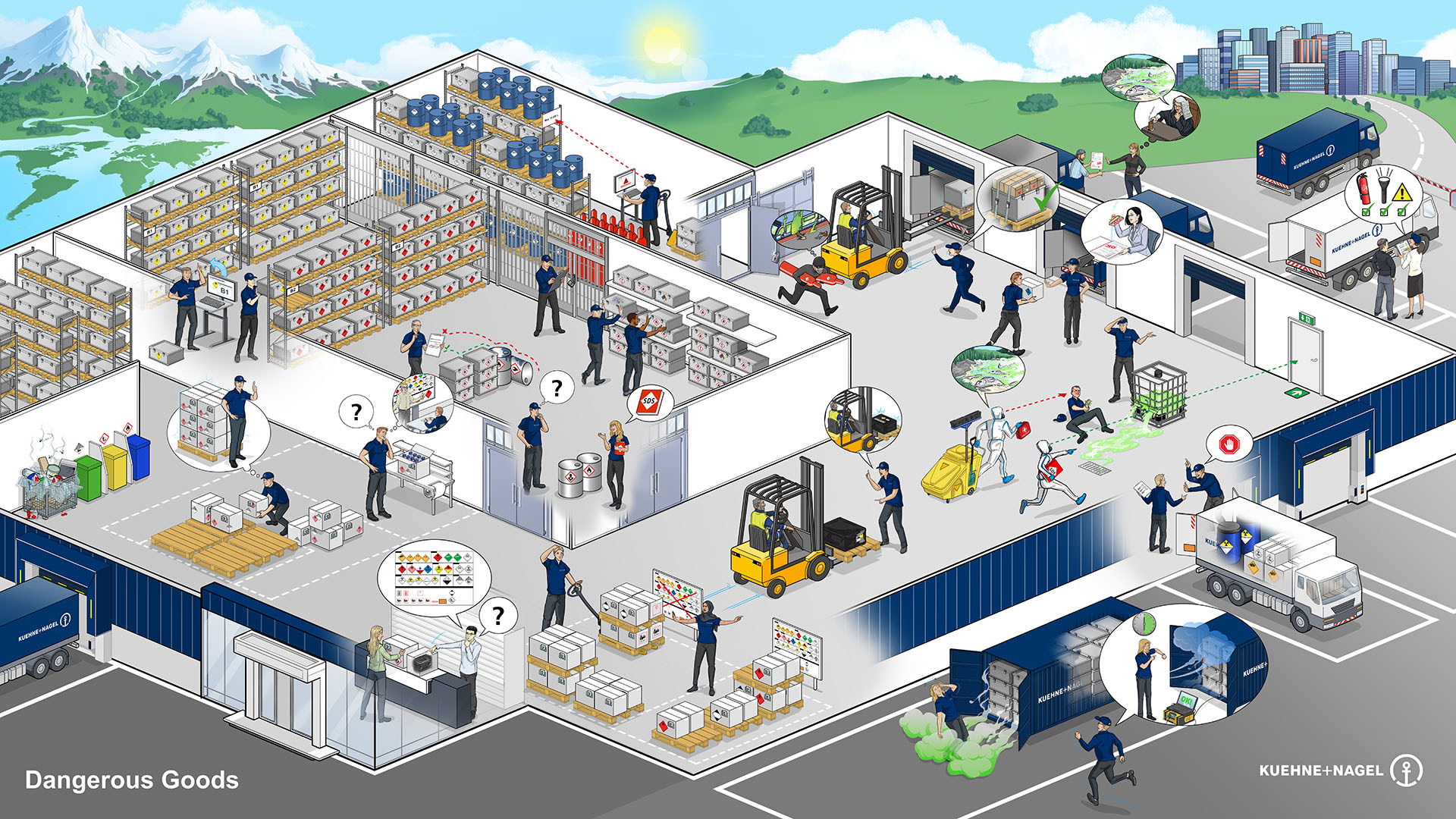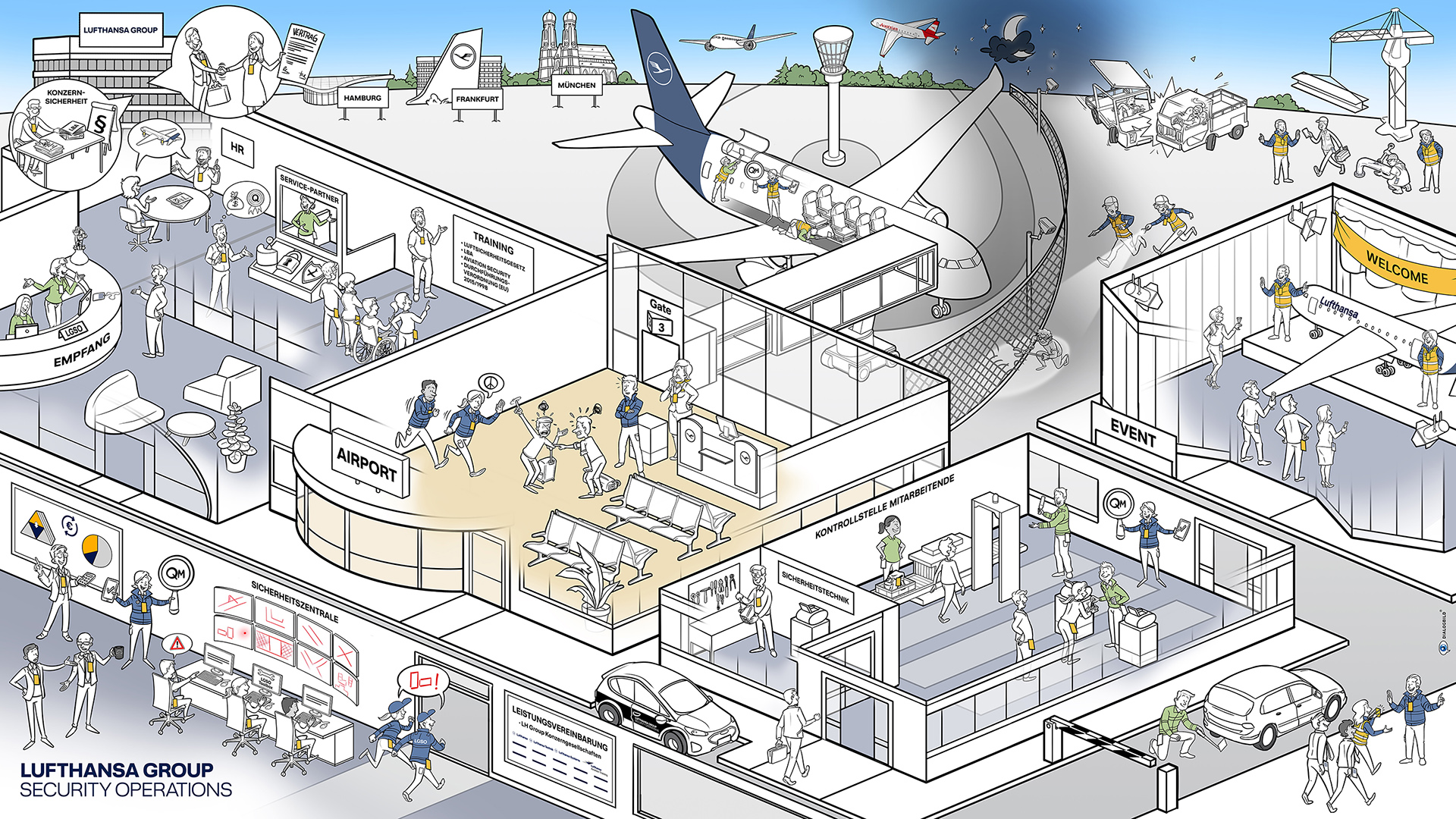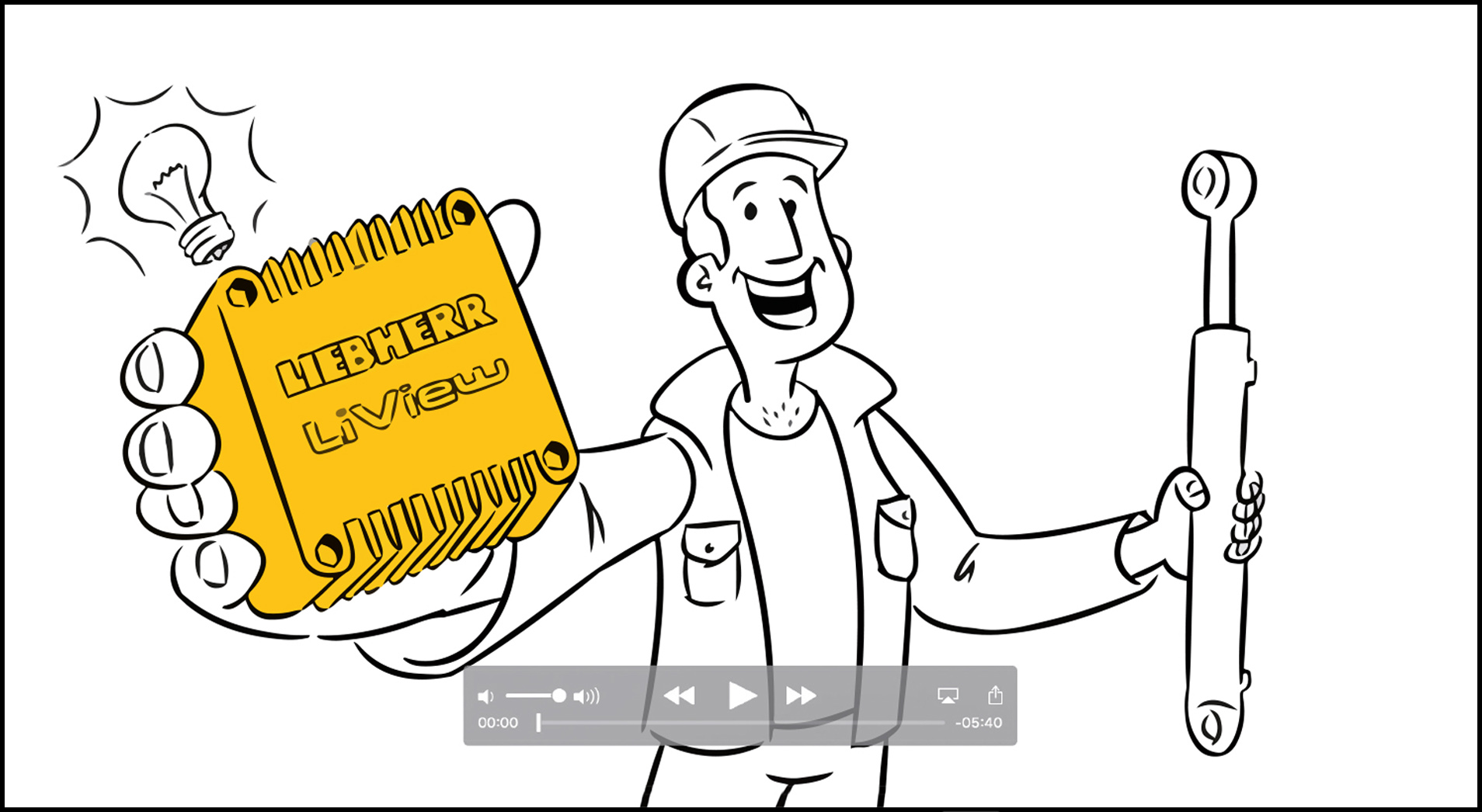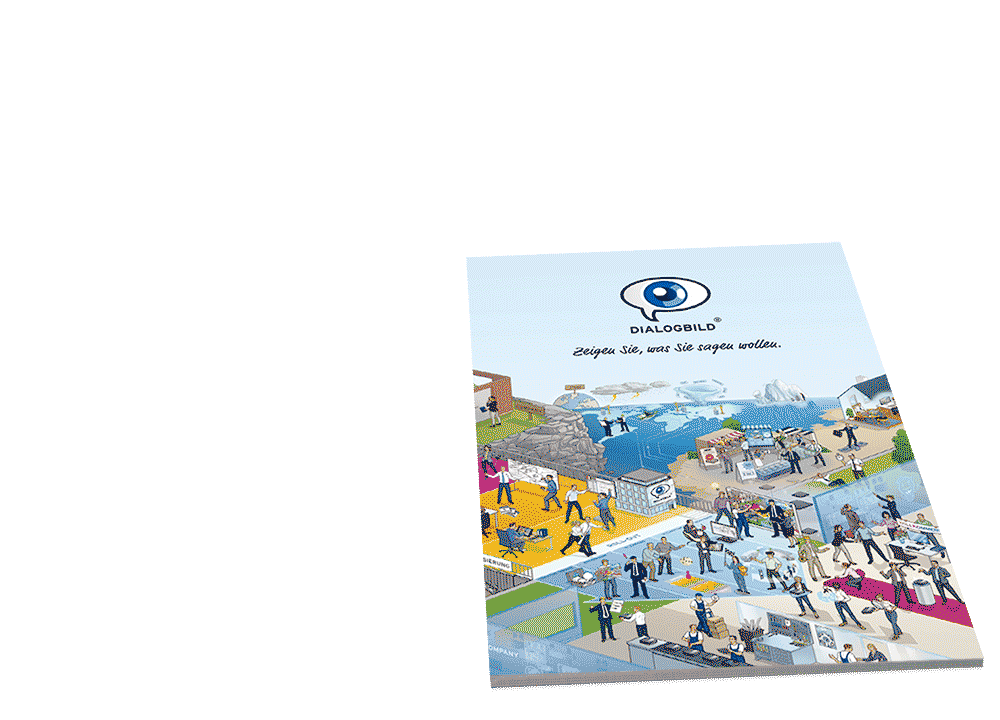







How dialog pictures can help with occupational health and safety law
What is the Occupational Health and Safety Act?
The Occupational Health and Safety Act serves to protect employees from hazards in the workplace. It specifies the measures that employers must take to ensure the health and safety of employees. These measures include:
- Workplace risk assessment.
- Creating safe working conditions.
- Obligation to train employees in occupational health and safety measures.
- Ensuring compliance with working time regulations, particularly regarding breaks and maximum working hours.
The law aims to create a safe working environment, prevent accidents and protect the health of employees.
Occupational Safety and Health Act : The significance in practice
In daily practice, the Occupational Safety and Health Act imposes a number of obligations on employers:
1. Risk assessment: Employers are required to conduct regular risk assessments. This involves identifying potential risks in the workplace and implementing appropriate risk mitigation measures.
2. Working time regulations: The law regulates permissible working hours and breaks. The Working Hours Act, an essential component of occupational safety and health, stipulates how long employees are permitted to work and what breaks they are entitled to.
3. Workplace safety standards: The Occupational Safety and Health Act also stipulates how workplaces must be designed safely. This includes ergonomic working conditions, appropriate protective equipment, and emergency plans.
Occupational Health and Safety Act: implementation challenges
Despite the clear regulations, implementing the Occupational Safety and Health Act can be a challenge for companies:
- Complex regulations: The multitude of regulations and laws governing occupational health and safety can be difficult for companies to understand. Many employees are not fully aware of the measures they must take to comply with these requirements.
- Employee training: It is important that all employees are informed about the applicable regulations and implement them correctly in their daily work. Training on occupational health and safety measures is often time-consuming and not always perceived as relevant by employees.
- Continuous adaptation: Laws such as the Occupational Health and Safety Act are regularly updated. Employers must ensure that they are always familiar with and apply the most current version of the law. This requires continuous adaptation and training.
How dialog pictures facilitate the implementation of the Occupational Safety and Health Act
Dialog pictures are an effective tool for communicating complex laws and regulations, such as the Occupational Safety and Health Act, in a clear and understandable way. Visually presenting information allows key content to be grasped more quickly and implemented more easily.
1. Visual representation of complex occupational health and safety laws
The Occupational Safety and Health Act contains numerous regulations that are often difficult for laypeople to understand. Dialog pictures provide a clear, visual representation of the most important aspects of the law. This allows employees to understand at a glance their responsibilities and how to implement them in their daily work. Whether it's about risk assessment in the workplace or compliance with break regulations – visual representations simplify the learning process.
Example: A dialog picture could clearly illustrate the steps of a risk assessment and support them with symbols and images. Employees can immediately see which risks need to be assessed and how appropriate measures can be taken.
2. Effective employee training
One of the biggest challenges in complying with occupational health and safety legislation is employee training. Traditional training methods, such as lectures or lengthy manuals, often result in important information not being fully absorbed. Dialogue images are interactive and engaging, stimulating employee interest and promoting understanding.
Using visual elements can help convey information more easily. For example, a well-designed dialog image on the Occupational Safety and Health Act could clarify the permissible working hours and breaks according to the Working Hours Act. This way, employees immediately understand when breaks are required and how long they are allowed to work.
3. Continuous training in the event of changes in the law
Since the Occupational Health and Safety Act is regularly amended, companies must ensure their training is always up to date. Dialog pictures allow such training to be updated quickly and efficiently. When a new version of the Occupational Health and Safety Act is published, the relevant sections of the visual representation can be adjusted and presented to employees again.
4. Promoting security awareness
Dialog pictures not only help convey information but also promote safety awareness among employees. By visually depicting workplace risks, employees are encouraged to take preventative action and ensure their own safety and that of their colleagues.
For example, a dialog picture could depict typical workplace hazards—such as slippery floors or unsafe machinery—while also highlighting the appropriate safety measures. This visual representation makes it easier for employees to identify potential hazards early and respond accordingly.
Legal requirements under the Working Hours Act
The Working Hours Act is an important component of occupational health and safety and stipulates how long employees are allowed to work per day and what breaks they are entitled to. It aims to prevent overwork and protect the health of employees.
The most important regulations of the Working Hours Act:
- The maximum daily working time is generally 8 hours, but can be extended to up to 10 hours under certain conditions.
- After 6 hours of work, a break of at least 30 minutes must be taken; for more than 9 hours of work, the minimum break is 45 minutes.
- There must be a rest period of at least 11 hours between two working days.
Dialog pictures can help communicate these regulations in a clear and practical way. Employees can quickly understand the break regulations through simple, visual representations and plan their working hours accordingly.
How Dialogbild can help as an agency
Dialogbild is a specialized agency that helps companies communicate complex content in a clear and understandable way. We develop customized visual solutions that facilitate compliance with laws such as the Occupational Health and Safety Act.
1. Customized visual training solutions
Dialogbild creates customized dialog pictures tailored to the specific needs of your company. Whether it's training on occupational health and safety laws, such as the Working Hours Act, or on specialized topics such as risk assessment, we ensure that your employees receive the information clearly and understandably.
2. Efficient training for your employees
Our dialog pictures are designed to attract attention and promote understanding. This saves time and ensures that your employees retain the training content permanently. This is a decisive advantage, especially when teaching safety-related topics.
3. Updating training content
Since laws such as the Occupational Health and Safety Act change regularly, we adapt the dialog images as needed. This way, you can be sure that your training is always up to date and meets all legal requirements.

DANGEROUS GOODS
SAFE JOURNEY
Das internationale Logistik- und Gütertransportunternehmen Kühne+Nagel arbeitet täglich daran, weltweit Güter zu transportieren – sei es per See- und Luftfracht, Landverkehr oder in der Kontraktlogistik. Dafür werden rund 79.000 Mitarbeiter an mehr als 1.300 Standorten in mehr als 100 Ländern beschäftigt.
Der Abteilung Dangerous Goods Management kommt dabei eine verantwortungsvolle Rolle zu: Der Transport von gefährlicher Fracht benötigt besondere Fachkenntnis und gewissenhaften Umgang, da es nicht nur um die Sicherheit von den Mitarbeitenden, sondern auch von Gesellschaft und Umwelt geht.
Um die breiten Themenkomplexe allumfassend abzubilden und gleichzeitig wichtige Details zu markieren, erarbeiteten das Dangerous Goods Management und DIALOGBILD gemeinsam das Dialogbild zum sicheren Umgang mit Gefahrgut.

LUFTHANSA GROUP SECURITY OPERATIONS
Lufthansa Group Security Operations was founded as an independent subsidiary within the Lufthansa Group in the year 2019 and employs approximately 170 employees across Germany. Its highest priority is the guarantee of operational security standards and the continuous availability of the broad services within the Lufthansa Group.
Appropriate and according to whichever arising need, the LGSO takes care, among other things, of the organization of classic plant security activities, security offices, visitor reception, aircraft security search and the control stations for employees. The dialog picture was conceptualized during multiple video conferences and finalized afterwards. In this way, LGSO could look at the first designs, discuss them internally and then generate feedback, which was then realized in detail by DIALOGBILD step by step. ...

LIVIEW – THE INTELLIGENT POSITIONAL TRANSDUCER
THE INTELLIGENT POSITIONAL TRANSDUCER
Companies face challenges when trying to present complex products and their functionality appropriately. Technical animations shall stimulate customer’s interests and convince them of new products. The marketing team of our customer LIEBHERR wanted to be more creative when presenting the intelligent cylinder with positional transducer LiView. That is why they contacted DIALOGBILD.
Our consulting and creation team had to implement the complex and technical attributes in a storyboard in such a way that it became informative but also charming in order to make it easier for customers to understand the attributes. ...
Frequently asked questions
What is the Occupational Safety and Health Act?
The Occupational Safety and Health Act specifies the measures employers must take to ensure the safety and health of their employees in the workplace. It includes regulations on risk assessment, working time specifications, break regulations, and safety-related requirements in the workplace.
Why is the Occupational Safety and Health Act important?
The Occupational Safety and Health Act is important for protecting the health and safety of employees and preventing work-related accidents and occupational diseases. It provides clear guidelines to ensure that working conditions are safe and employees are protected from hazards.
What does the Working Hours Act regulate in terms of occupational health and safety?
The Working Hours Act stipulates how long employees may work per day and what breaks they are entitled to. It is designed to prevent overwork and health risks associated with long working hours. As a general rule, the maximum daily working time is 8 hours. A break of at least 30 minutes must be taken after 6 hours of work.
What is a risk assessment in occupational health and safety?
A risk assessment is a central component of the Occupational Health and Safety Act. Employers must regularly analyze potential hazards in the workplace and take measures to minimize these risks. These include physical hazards such as machinery or hazardous substances, as well as psychological stress caused by stress or overwork.
What challenges exist in implementing the Occupational Health and Safety Act?
- Complexity of the regulations: Many companies struggle to understand and implement the various legal requirements.
- Employee training: It is often difficult to adequately inform and train employees about the applicable regulations.
- Continuous adaptation: The regular updates and changes to the Occupational Health and Safety Act require companies to regularly adapt their training programs and safety measures.
How can dialog pictures help with compliance with the Occupational Safety and Health Act?
Dialog pictures are an effective way to visually present and understand complex content of the Occupational Safety and Health Act. They can clearly explain key points such as risk assessments, working time regulations, or safety regulations. This allows employees to quickly and easily understand which measures they need to implement to meet legal requirements.
How do dialog pictures support employee training?
Dialog pictures make training interactive and visually engaging, helping employees better absorb and understand the information. They are ideal for explaining topics such as occupational health and safety laws, working time laws, and specific break regulations. The simple presentation makes the training content more accessible and easier to understand.
How can dialog pictures stay up-to-date with changes to the Occupational Safety and Health Act?
Dialog pictures can be flexibly adapted and updated as regulations change. As soon as a new version of the Occupational Safety and Health Act is published, the dialog picture can be revised accordingly and used in new training courses, ensuring employees are always up-to-date.
What advantages do dialog pictures offer compared to traditional training?
Dialog pictures offer numerous advantages:
- Comprehensibility: Complex laws and regulations are communicated in clear, visual formats.
- Interactivity: Interactive images encourage active employee participation and make training more engaging.
- Time savings: Content can be conveyed more quickly and accurately than in traditional training.
- Sustainable learning success: Employees remember training content better thanks to the visual presentation.
How can Dialogbild, as an agency, help you comply with the Occupational Safety and Health Act?
Dialogbild offers customized visual solutions for training your employees. We create customized dialog pictures that clearly and clearly convey the most important aspects of the Occupational Safety and Health Act, such as risk assessments, work breaks, and working time regulations. We also flexibly adapt the training to changes in the law, ensuring your employees are always up to date.
 SELECT INFO PACKAGE
SELECT INFO PACKAGE